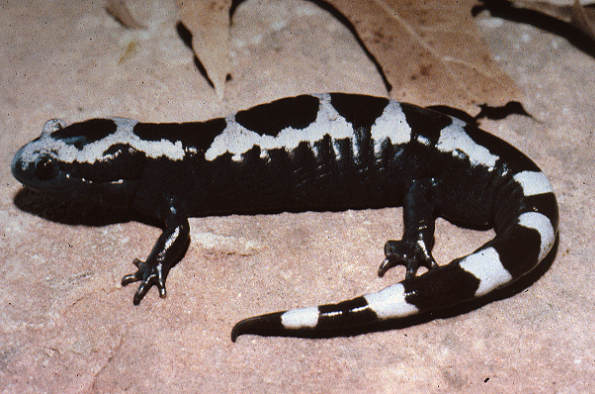 |
| Marbled Salamander: Ambystoma opacum Our Herepetology Field Trip to Francis Marion Forest in Awendaw, SC was a brisk, cool day where we ventured along a trail searching for Herps through the woods! Our Lab TA, Paul, was actually the person who found the beautiful marbled salamander. He found it in the moist soil in the woods. It was so pretty and slimy and shimmery! I didn't realize a salamander could be so beautiful. Its cute chubby body and stumpy limbs are just too cute! The marbled salamanders are stalky, banded salamanders where the females tend to have grey bands and the males tend to have more white bands. The one we found looked more greyish and silvery to me so I am thinking may have been a female. Like other mole salamanders, they tend to be secretive salamanders, living under logs and burrowing in moist places. These fossorial animals can grow to about 4 inches and stretch from New England to Florida and as far West as Texas and Illinois. They generally live their lives underground and tend to come out in rainy weather, especially during breeding season. These salamanders generally breed in the Fall laying eggs in clusters under logs. They either hatch during that Fall/Winter or hatch in the Spring. The aquatic larvae then take from 2-9 months to metamorphose into terrestrial juveniles. Then, in about 15 more months they then become adults. Marbled salamanders tend to eat insects, worms, centipedes, and mollusks. I hope I get to find another one on my own because they are too stankin' cute!
A cool fact about Marbled Salamders: Ambystoma opacum: they have poison glands in their tails that helps deter predators!
|
Friday, April 13, 2012
Natural History of the Marbled Salamander
Subscribe to:
Post Comments (Atom)
1 comment:
Adorable and toxic - what a combination!
Post a Comment